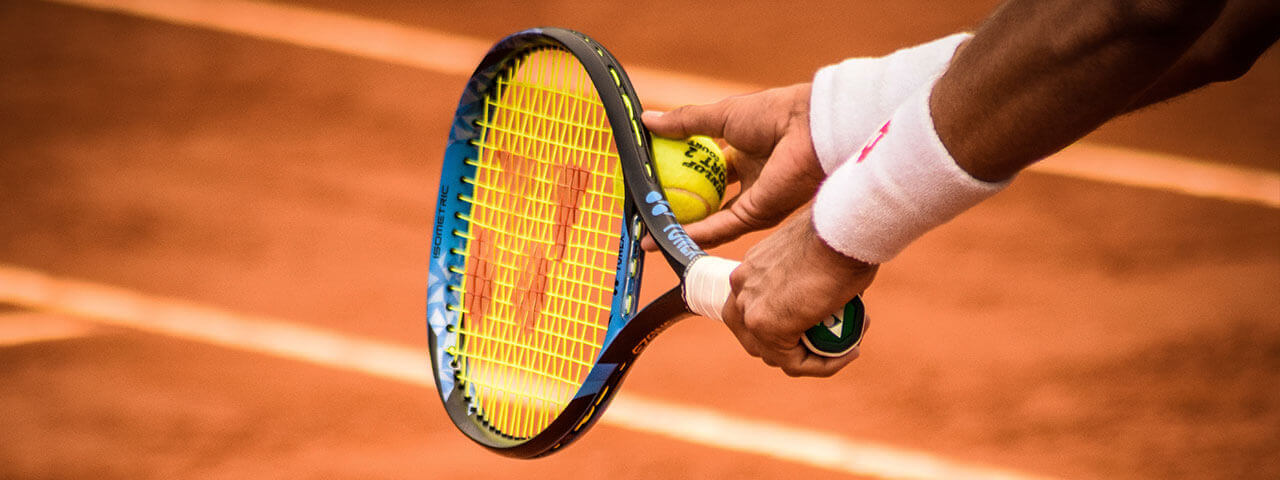The primary challenge in tennis is finding the right contact point with the ball, to utilize maximum swing power and control each shot. Perfect timing and positioning are the fundamental principles that tennis players must continuously master. Sports vision training can improve their performance.
Yet few coaches consider the role vision plays in timing and positioning.
What Is the Role of Vision in Tennis?
When Gaël Monfils – ranked no. 9 in the world – hits the ball between his legs while jumping in the air, all tennis wisdom seems void. How does he do it? If you watch him, or any world-class player closely, you’ll see their high level of visual attentiveness.
It All Starts With Visual Information
Visual skills are the basis for a tennis player’s every move. Without sophisticated neuro-visual processing, accurate timing and positioning are unachievable. All the information a player needs in order to reach a split-second decision is transmitted visually, and contains input regarding the speed, direction and spin of the ball, the distance to the net and the lines, and the position of the opponent. Only if this information is generated, processed, and analyzed accurately can the player react accordingly, and return a winning shot.
That’s a lot of information to process in a very short time. Fortunately, these are skills that can be learned. Regular dedicated sports vision practice with the guidance of sports vision trainer Opto-Mization Optometry & Vision Therapy will help improve your tennis player’s game.
 Excellent Vision Is Essential to Playing Tennis
Excellent Vision Is Essential to Playing Tennis
In a sports vision exam, Opto-Mization Optometry & Vision Therapy can identify where a player’s visual skills need enhancement and create an appropriate training program. The assessment will address:
Vision and Space
- Spatial Localization – the way the player envisions his/her position on the tennis court in relation to other objects such as lines, the net, and the opponent.
- Depth Perception – accurately evaluating the distance and speed of the ball to gauge whether it will land inside or outside the line
- Peripheral Vision – being aware of, and analyzing, the movements of the opponent on the far end of the court. Their movement determines where to aim and how hard to hit.
Clarity of Vision
The ball is a small, fast-moving object, and the player can never lose focus.
- Visual Tracking – quick, accurate tracking requires rapid eye movements called saccades.
- Dynamic Acuity – maintaining a sharp image of the ball as it moves rapidly.
- Focusing – the ability to quickly shift focus from near to far; following a ball that is approaching at high speed requires repeated refocusing.
- Visual Search – control over eye movements and the ability to cover a large visual field.
- Accommodation & Convergence – the eyes must be synchronized in moving, focusing, tracking, converging at all times, at any distance, direction, and speed.
- Speed of Recognition – correct interpretation of the visual input. The ball travels at 120-150 mph, giving a player approximately half a second to prepare and react to a shot.
External Influences
Tennis is largely an outdoor sport. Weather and light conditions are inconsistent and unreliable.
- Contrast Sensitivity – during cloudy weather the light may be poor, making it harder to identify the lines or assess the speed of the ball due to poor contrast. Also, the player needs to identify a high flying ball against different backgrounds, such as the sky and the crowd.
- Glare Recovery – in bright sunlight, a shot may get lost in sudden glare.
The next time you watch Djokovic, Nadal, Thiem, or Federer, keep the above in mind. You’ll start noticing how essential vision-related capabilities are. Ask yourself if any of your own players may be lacking the visual skills to become the winners you want them to be.
Sports Vision Training on Vancouver Island
You can provide your athletes with a visual advantage by adding a dedicated sports vision training program to their routine. Athlete training takes place at Opto-mization Optometry & Vision Therapy. Your players will also receive instructions on how to exercise in their own time and as part of their regular sports training. Contact us for more information and schedule an appointment today.
Our practice serves patients from Victoria, Nanaimo, Duncan, and Vancouver Island, British Columbia and surrounding communities.
References:
- https://www.researchgate.net/publication/334301916_Sports_Vision_Based_Tennis_Player_Training
- https://www.advancedvisiontherapycenter.com/services/sports_vision/vision_and_performance/tennis/
- https://www.advancedvisiontherapycenter.com/../Sports_Vision/2016/9/Tennis__Visual_Demands.htm
- https://www.sportsvision.pro/athletes/dynamic-visual-skills-for-sports/tennis/
